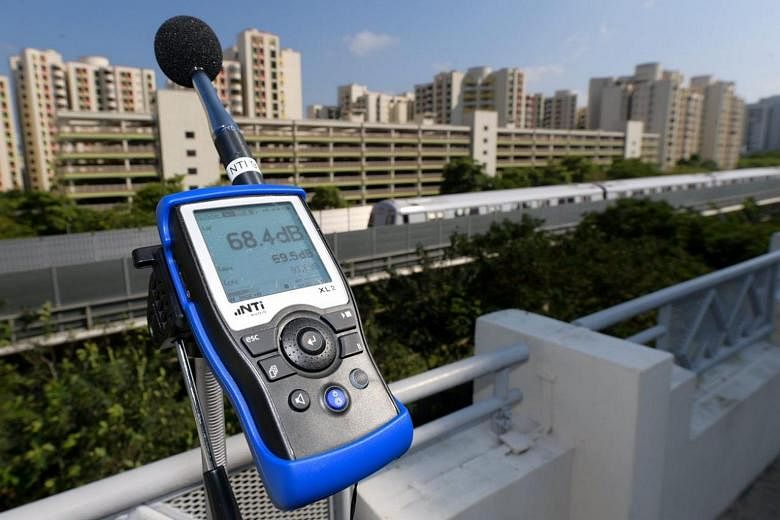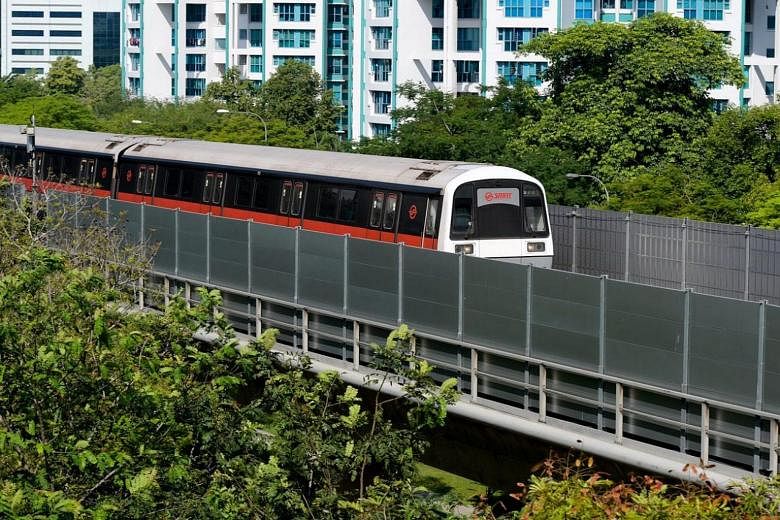SINGAPORE - The first phase of a project to install noise barriers along MRT viaducts is more than 80 per cent done, and is targeted to be completed this year, the Land Transport Authority said on Friday (Feb 9).
The outstanding sections of tracks to have barriers installed are between Lakeside and Boon Lay MRT stations, Aljunied and Paya Lebar stations, and Paya Lebar and Eunos stations.
The LTA said 4.5m-high barriers will be used at these sections, instead of the regular 2.5m ones the authority has installed elsewhere.
This is to "better mitigate the noise profile", the LTA said, as these are turnout sections where trains change tracks.
The LTA started installing noise barriers at above-ground MRT tracks in late 2013, for locations such as Admiralty, Marsiling, Sembawang, Ang Mo Kio, Pioneer and Yew Tee.
When the first phase is completed, 11.5km worth of barriers will be installed at 25 locations.
Design works for Phase 2 are under way, with installation expected to start in the second half of this year, the LTA said. Phase 2 will cover 20 new locations, including Tampines, Ang Mo Kio and Clementi, with 10km of railway noise barriers.
The LTA has said that priority is given to locations where noise levels exceed the National Environment Agency's recommended guideline of 67 decibels averaged over an hour.
According to measurements taken at residential buildings, the noise barriers are able to reduce noise from passing trains by at least five decibels, the LTA said.
Residents living at Blocks 334 and 335 of Sembawang Close, which is beside the North-South Line MRT viaduct, said there was a reduction in the noise emitted by passing trains after barriers were installed in 2016.
Mr Mahendran Rajagopal, 45, said: "We used to hear the noise of train wheels over the rails, but not any more."
"During the night, when there is less surrounding noise, the noise from the trains is 'louder'. But we have gotten used to it," said the IT consultant.
Mr Anuar Husin, 46, who is currently unemployed, said noise levels have reduced, but said that older models of trains generate more noise than newer ones.
"Still, it's much better. In the past, I couldn't hear my mother calling me when a train passed by," he said.
However, Ms Lily Yeo, 40, a housewife, said there was only a slight improvement. "It could be quieter," she said.
The LTA said on Friday that it will carry out a more in-depth noise measurement study, and that the findings will be used to plan other noise mitigation measures in the future.
The LTA said that installing the noise barriers requires track access during MRT off-service hours and the retrofitting of existing railway structures. The shorter MRT operating hours which came into place in December have given engineers more time to work, it added.




